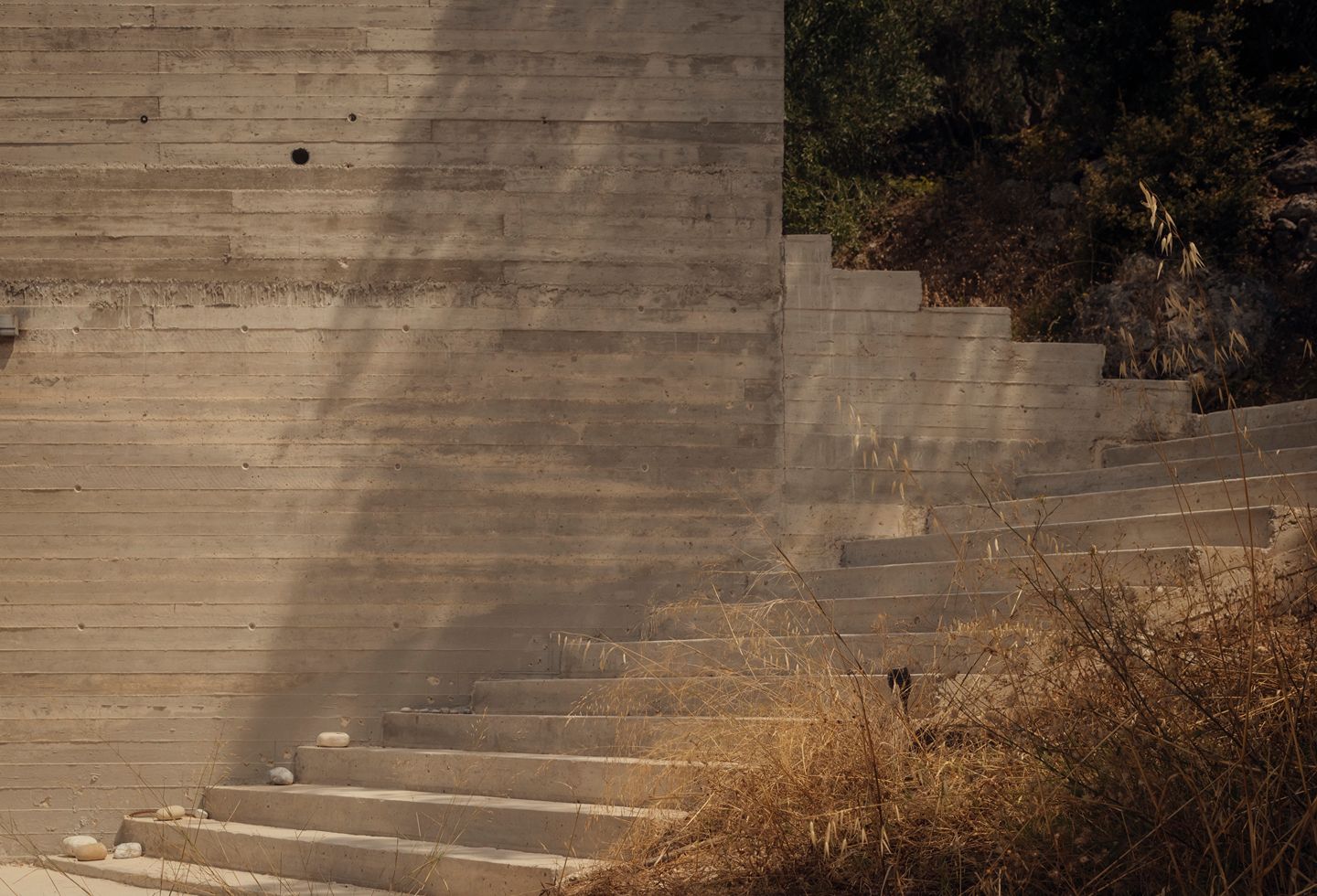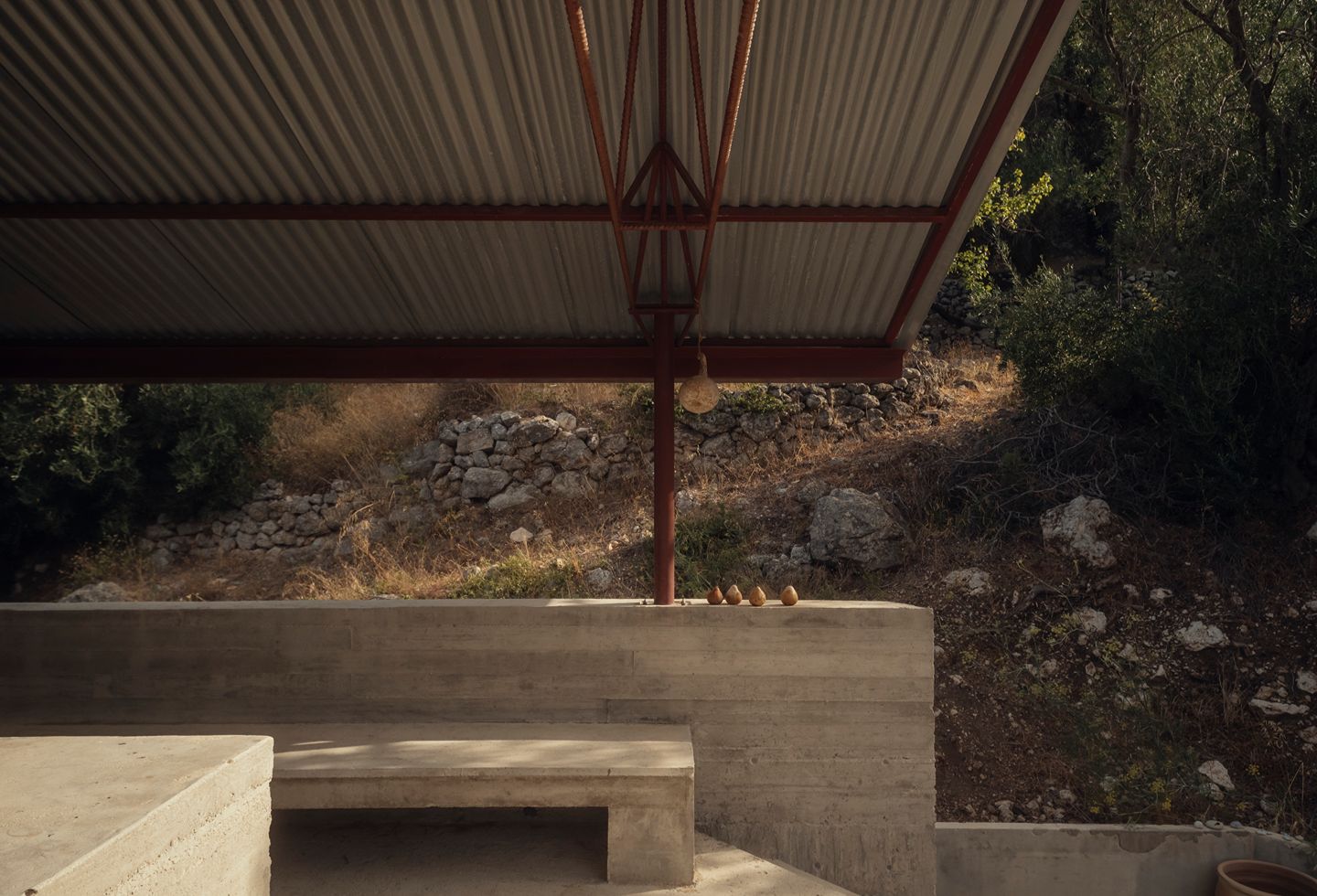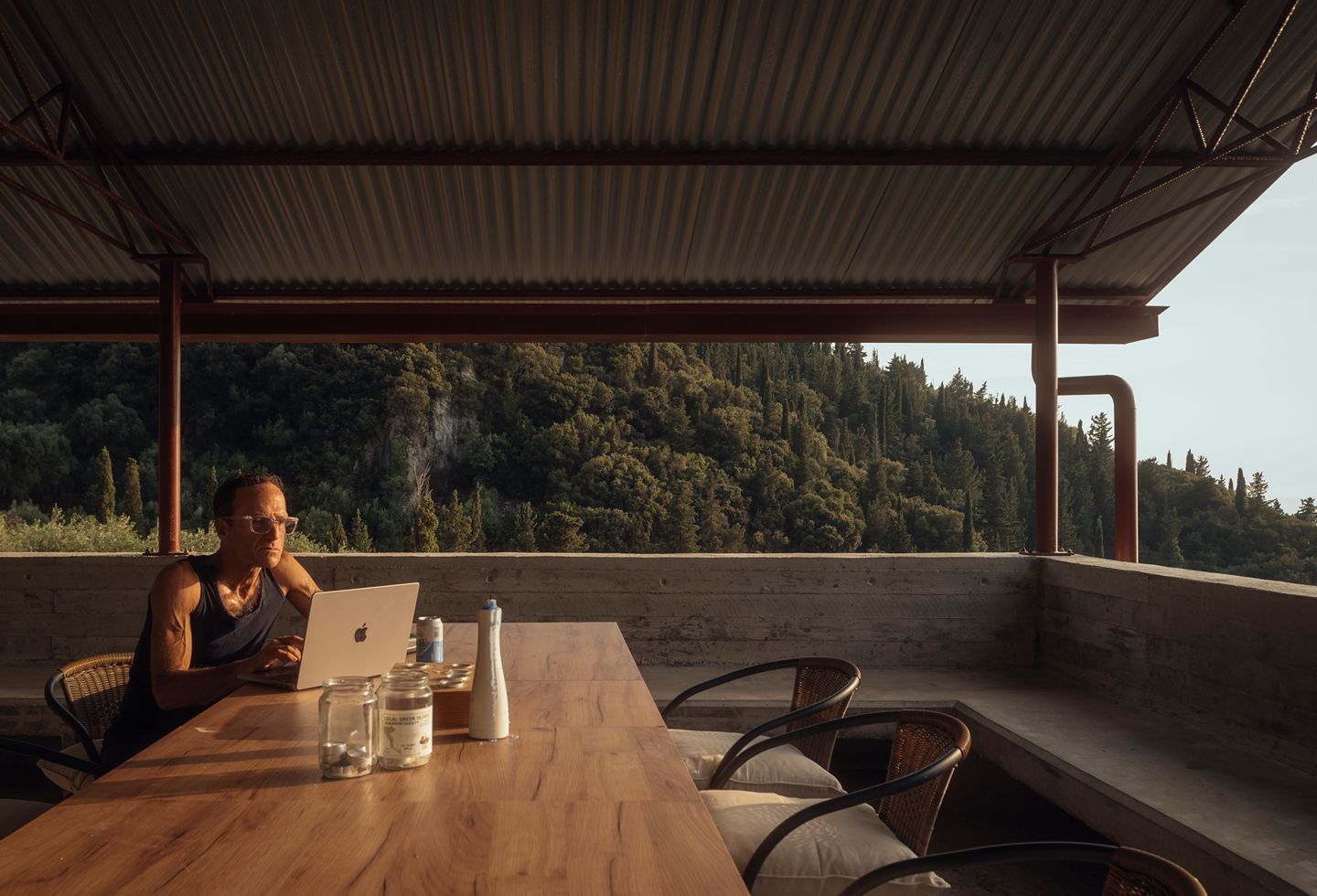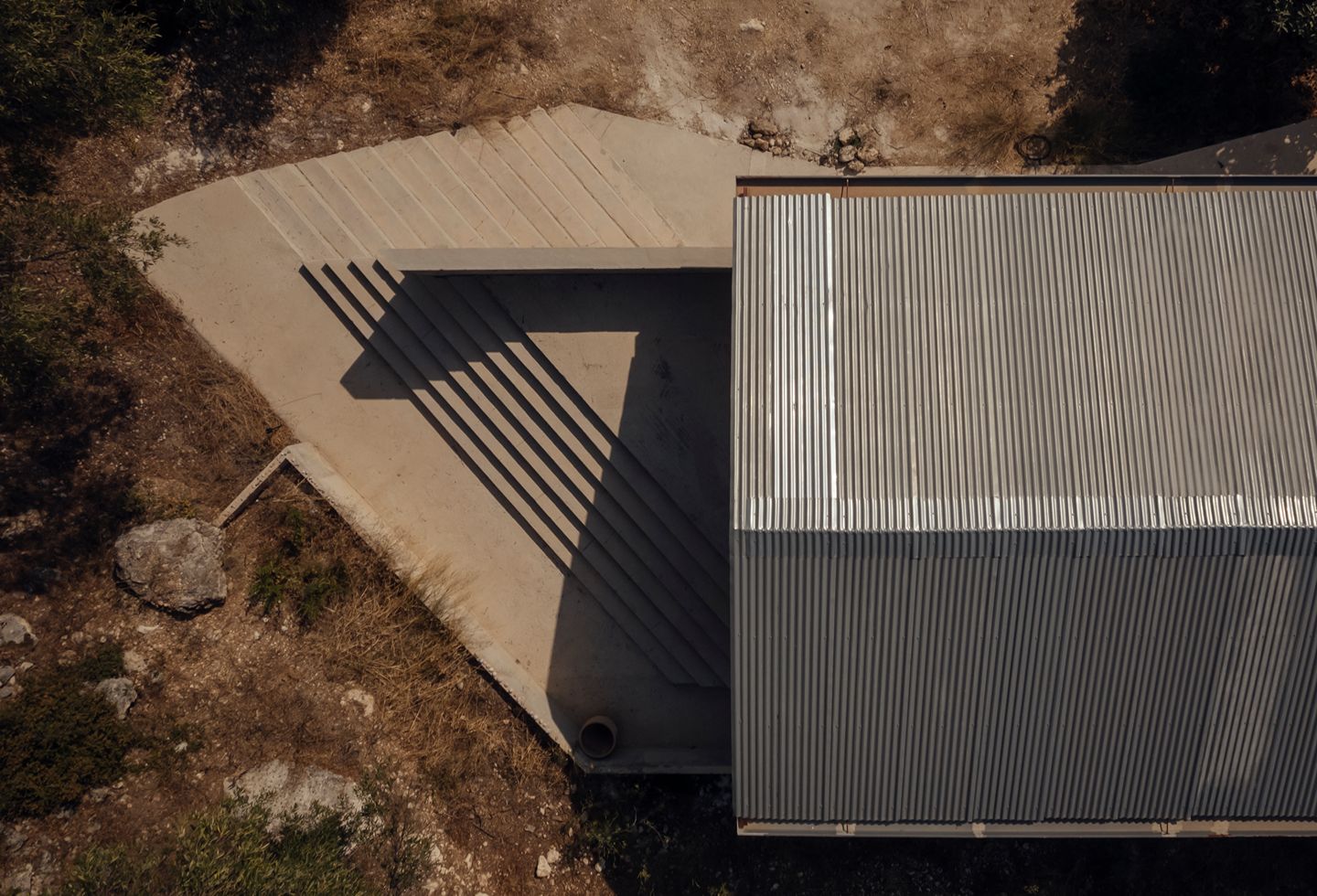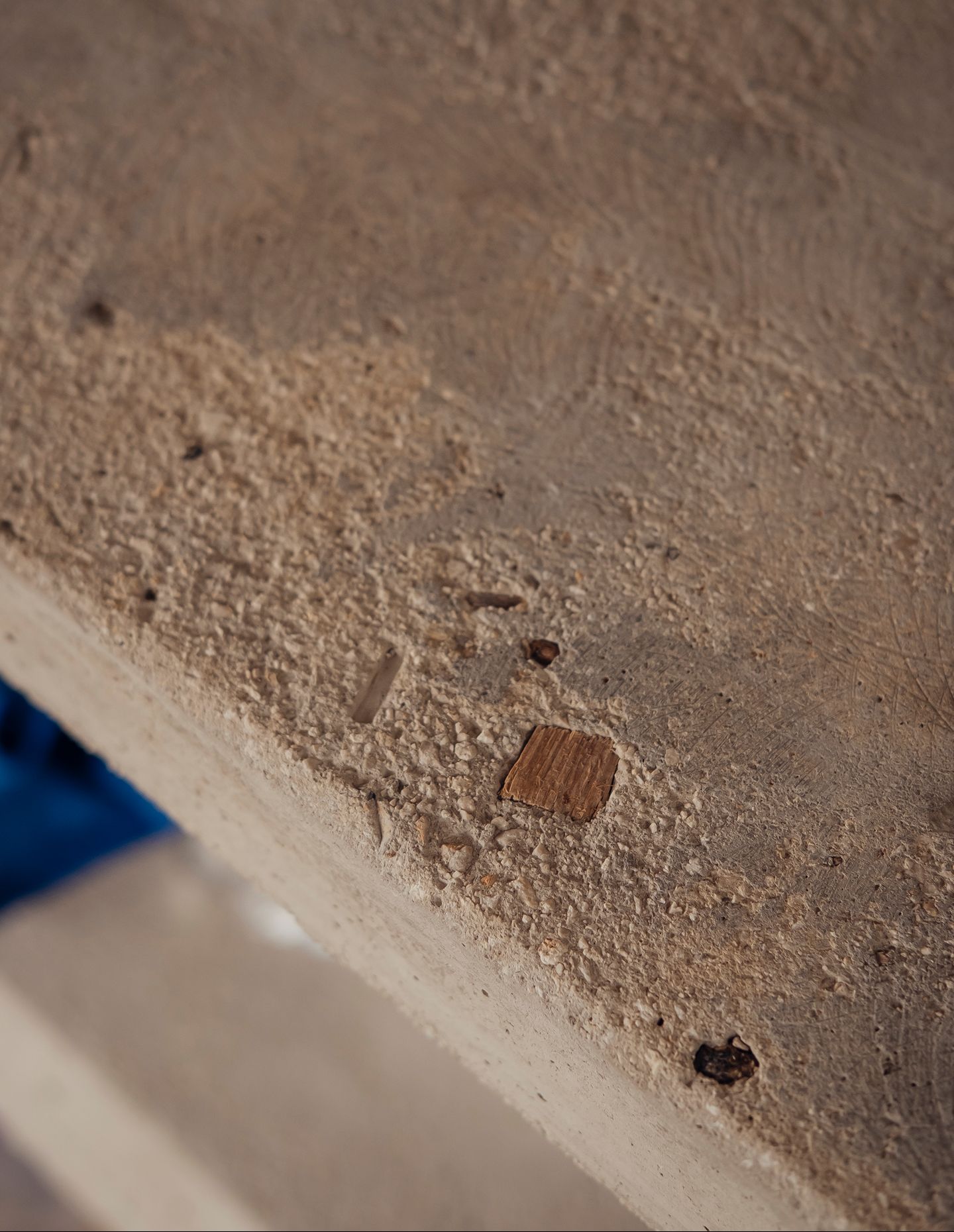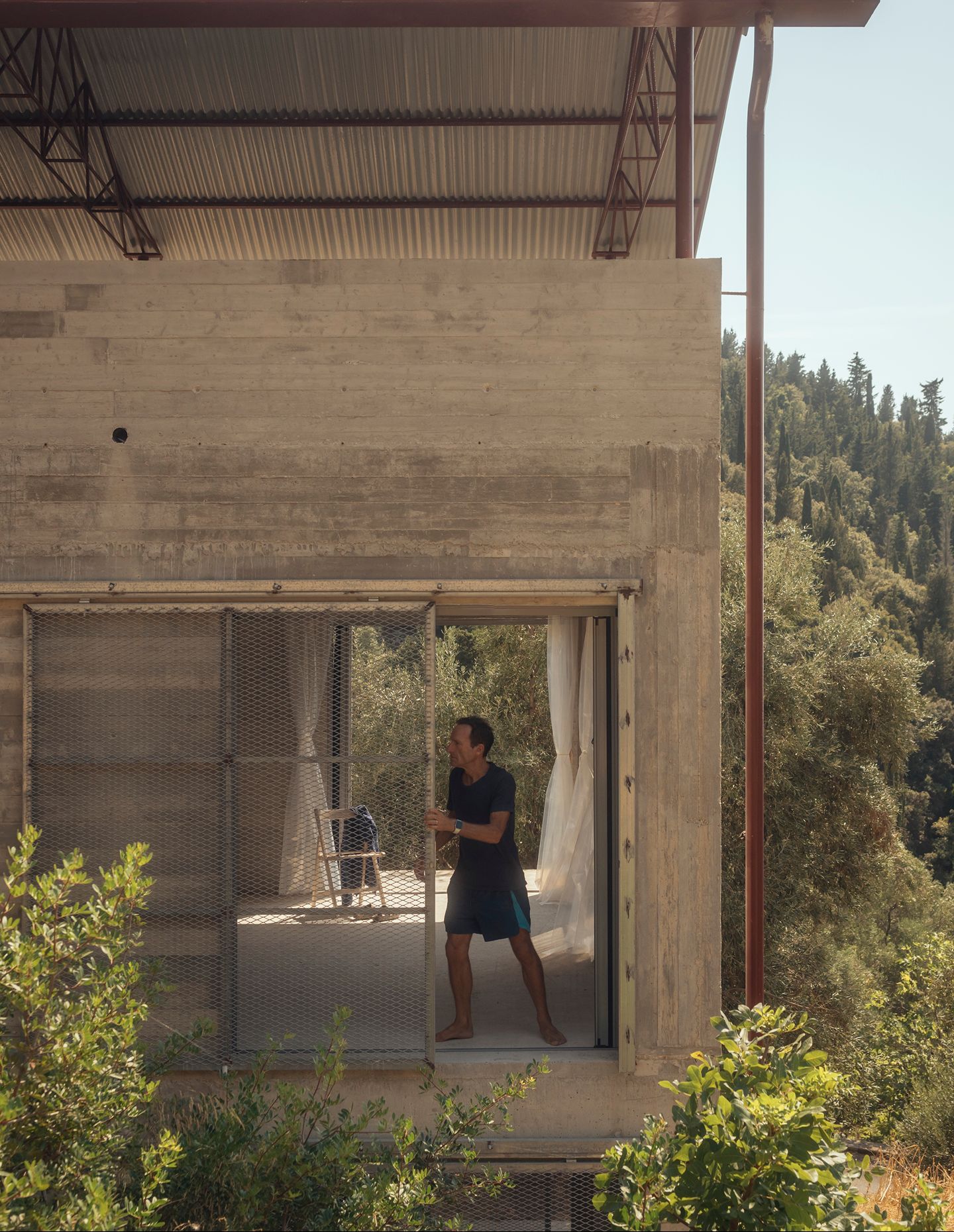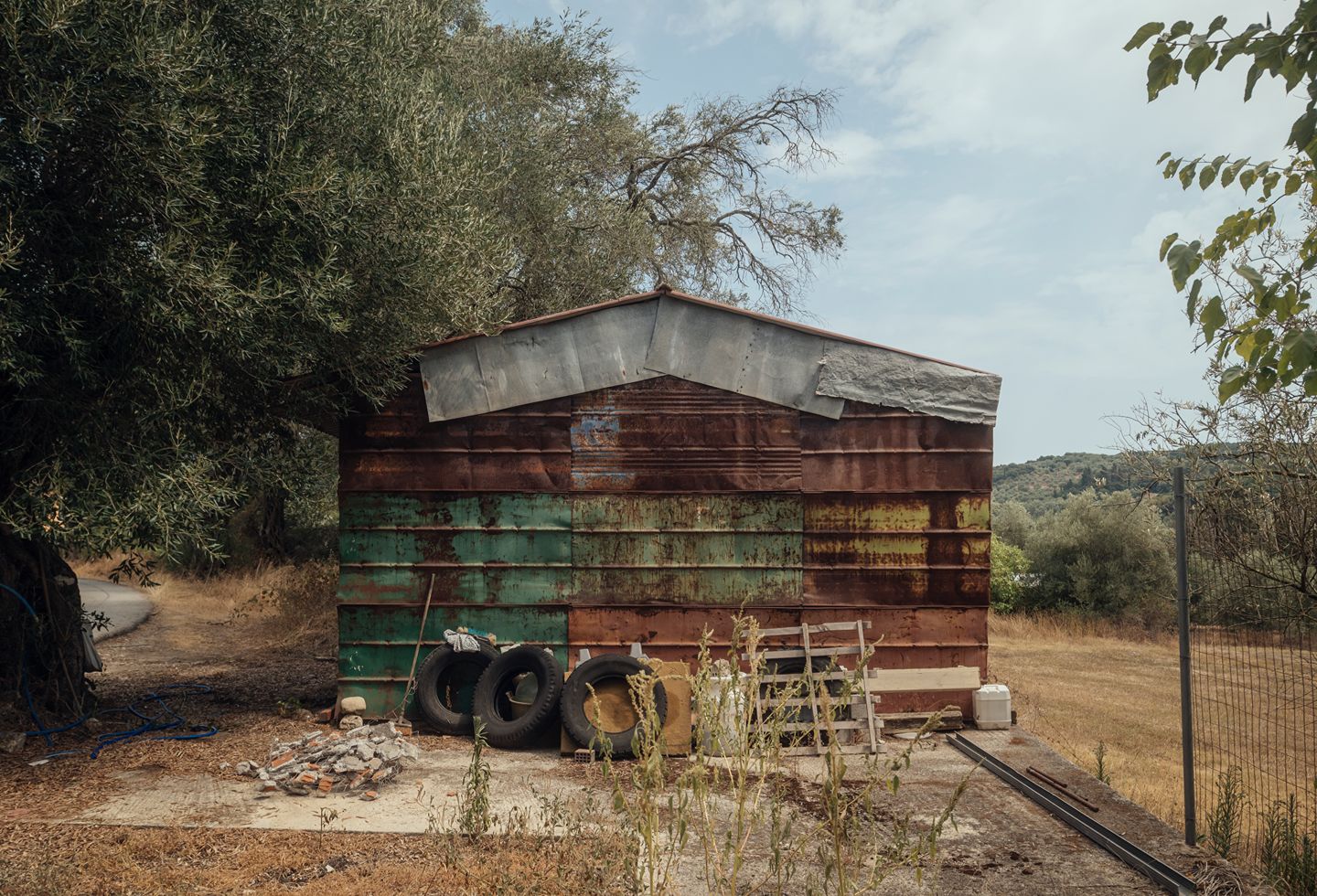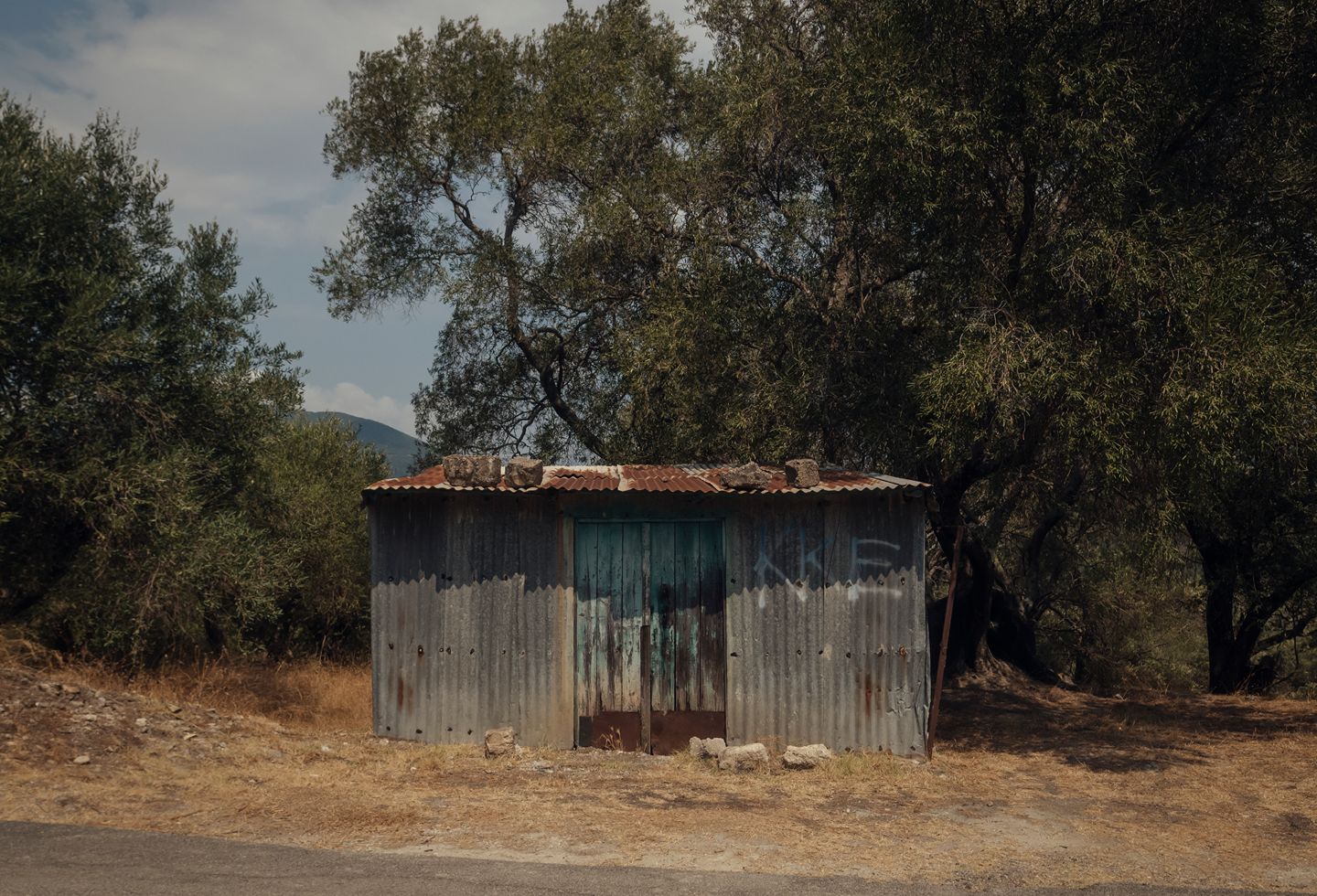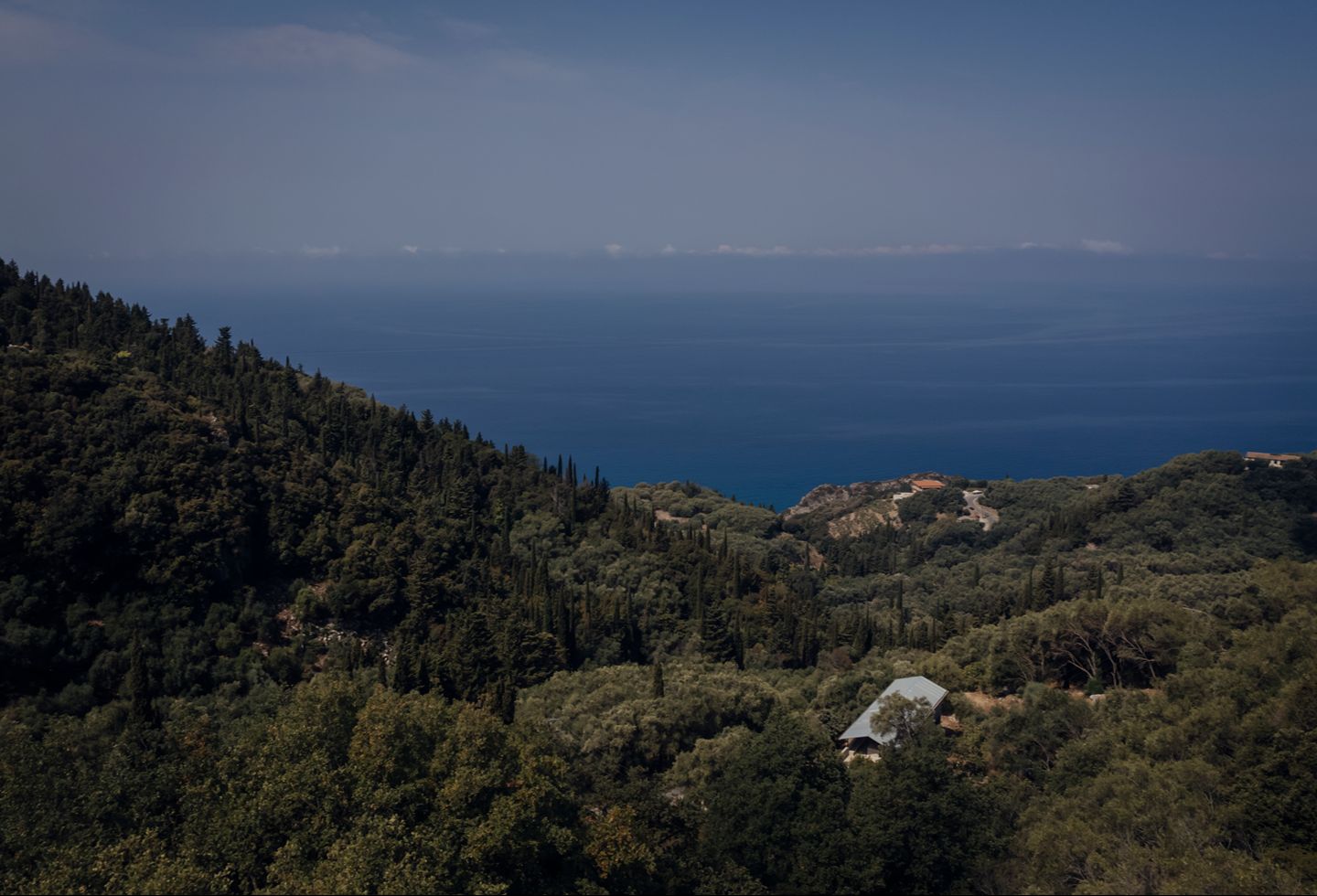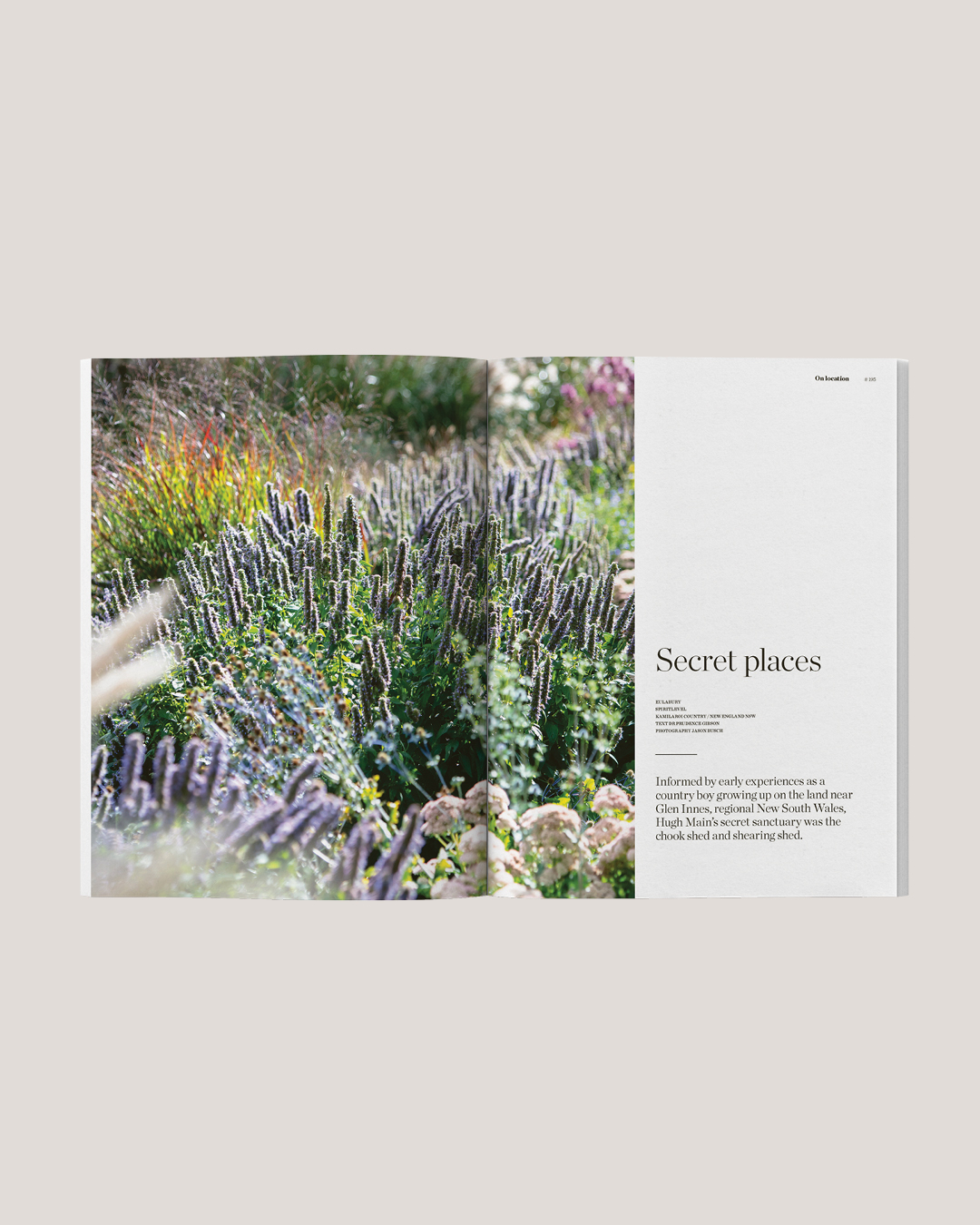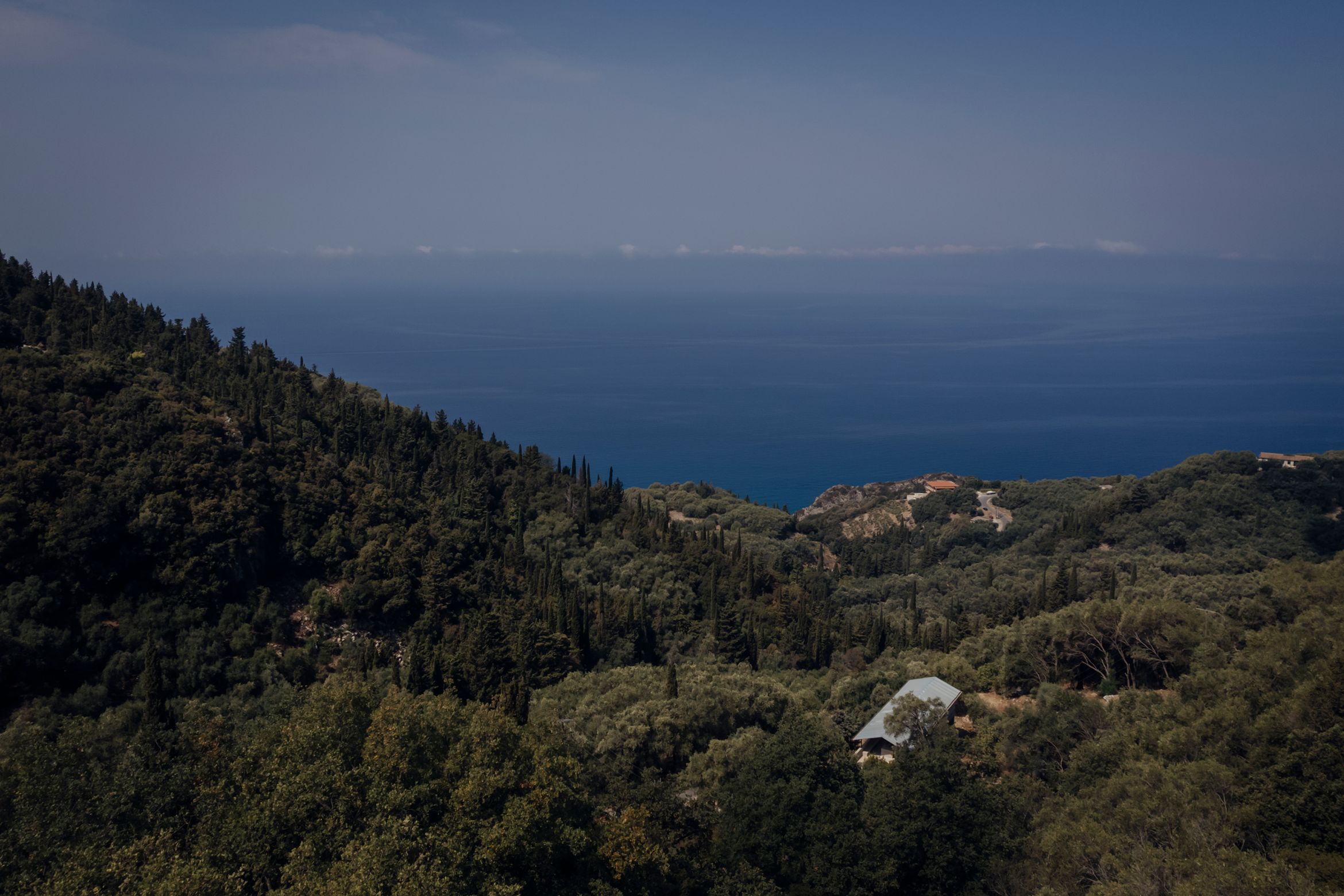Invisible Studio’s House in an Olive Grove offers a fresh interpretation of vernacular architecture, set against the rugged landscape of the small Greek island of Corfu. Designed by British architect Piers Taylor, the house draws upon local materials and building techniques to create a form that is agnostic in its uses yet deeply embedded in its environment. The project challenges conventional expectations of luxury and architectural precision. By eschewing an ‘over design’, the home is a test case for an adaptable approach to architecture – one that speaks to a broader international audience.
In an area prone to earthquakes and bushfires, the house’s design prioritises resilience and pragmatism. Reinforced concrete – sourced from local limestone aggregate – forms the walls, floors, ceilings, furniture and even kitchen elements. The choice to avoid glass entirely, opting instead for galvanised weldmesh sliding screens and plastic curtains, speaks to a deliberate move away from polished finishes and towards a raw expression of materiality. This approach results in a structure that is tent-like in its occupation – open, shaded and responsive to the island’s climate.
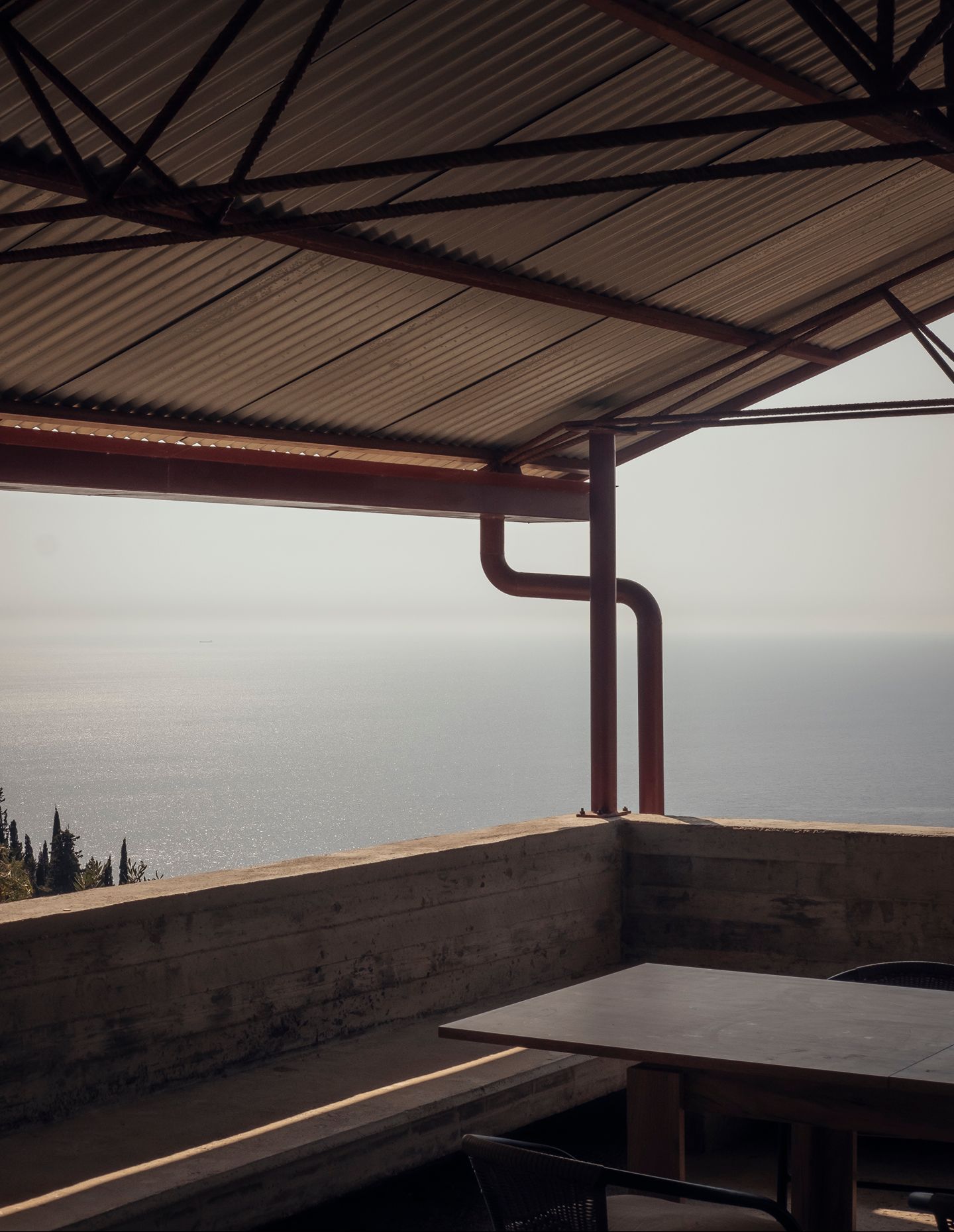
The area has personal significance to Taylor, who grew up spending summers visiting Corfu with his family. Because of this emotional resonance, the project is steeped with a reverence to place.
Central to the design is a rejection of the typical Mediterranean villa, which is so often characterised by marble floors and tiled roofs.
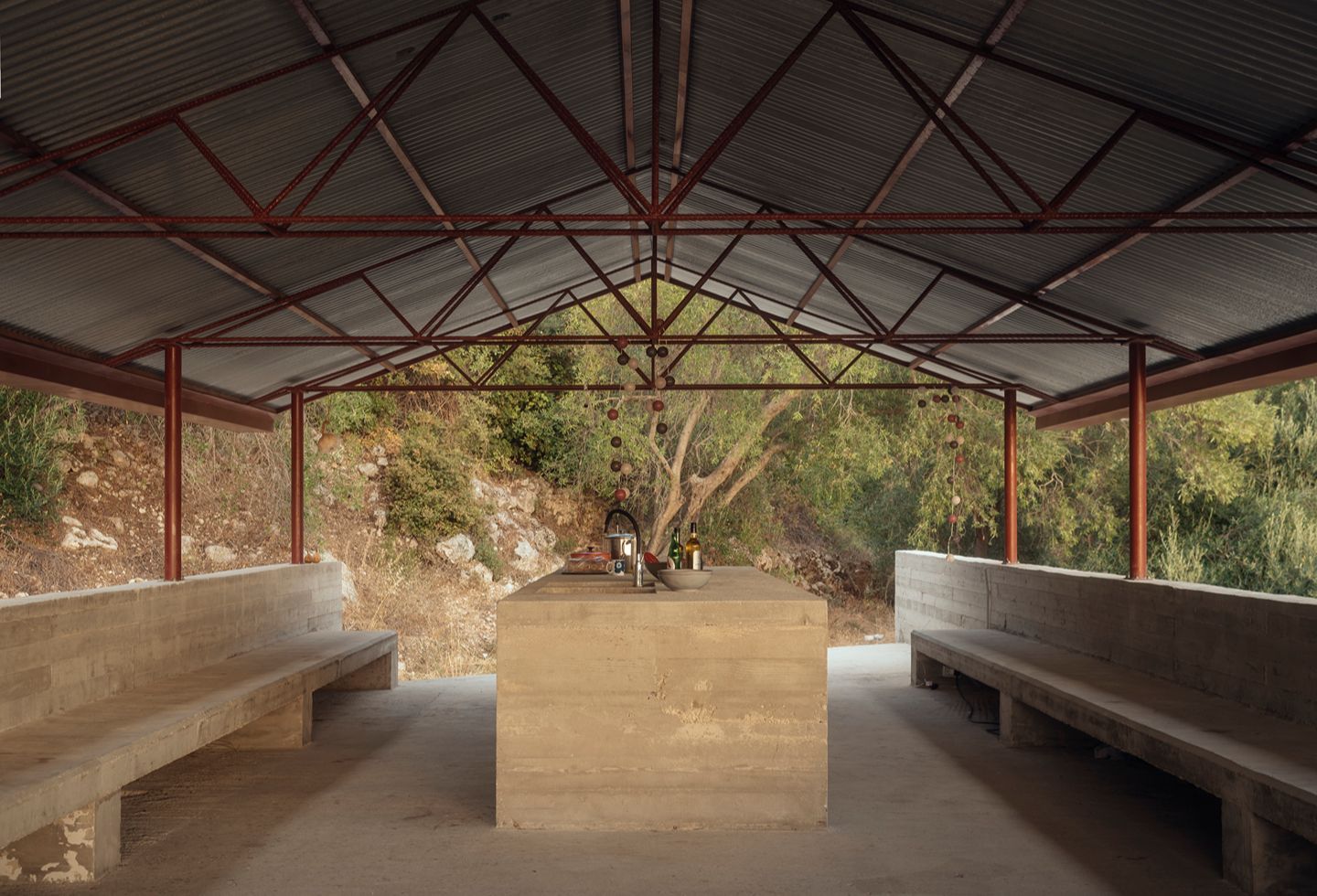
Instead, House in an Olive Grove builds on the least promising part of the site, transforming it into a place of understated beauty. This act of reclamation is both pragmatic and poetic, suggesting a design language that balances memory and modernity.
Related: Leopold Banchini in Marrakech
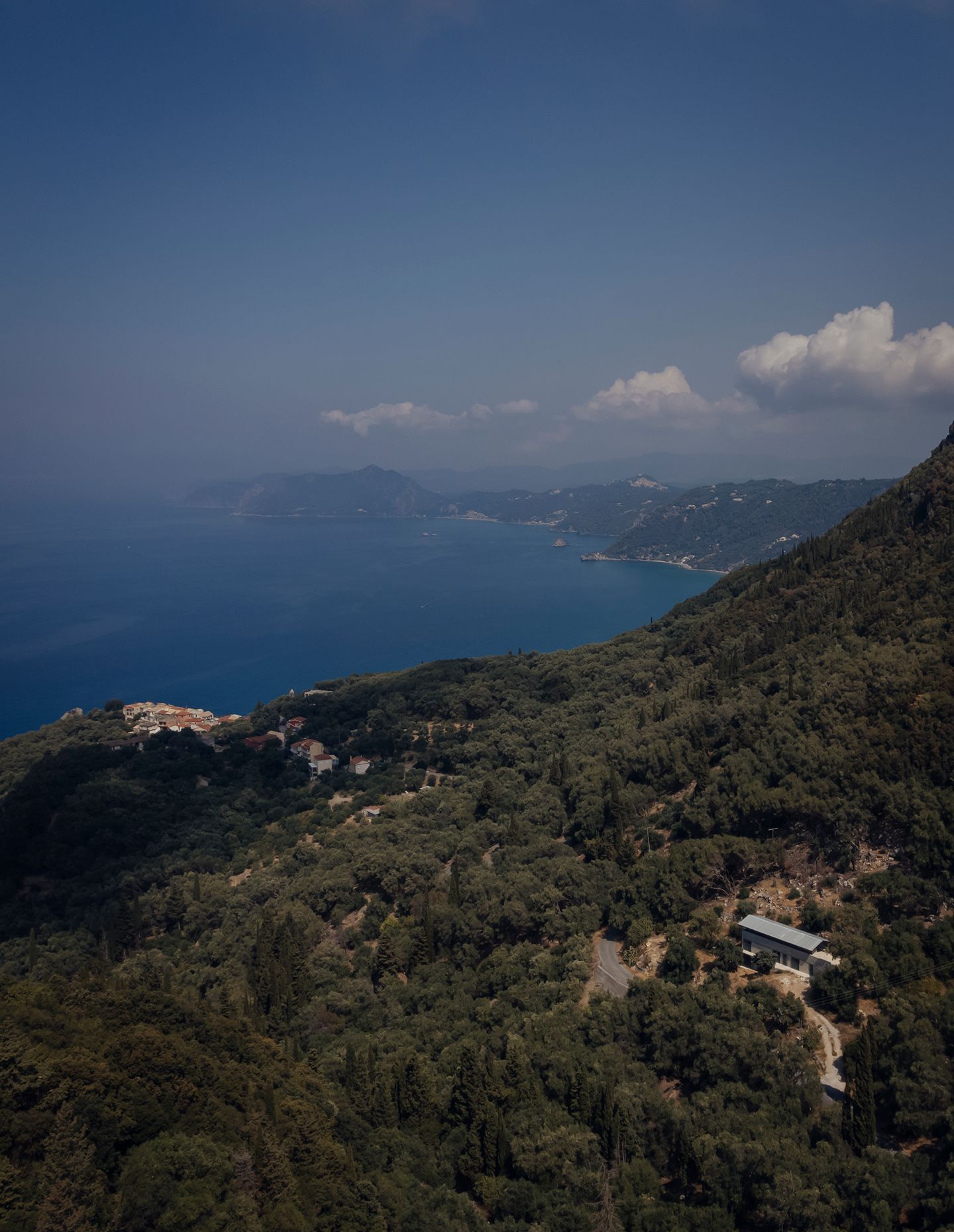
The building process involved collaboration with local craftspeople, whose methods and materials determined much of the design. The visible eccentricities of the formwork and the unapologetic display of construction ‘mistakes’ offer a narrative of authenticity, a counterpoint to the glossy perfectionism that often defines contemporary architecture.
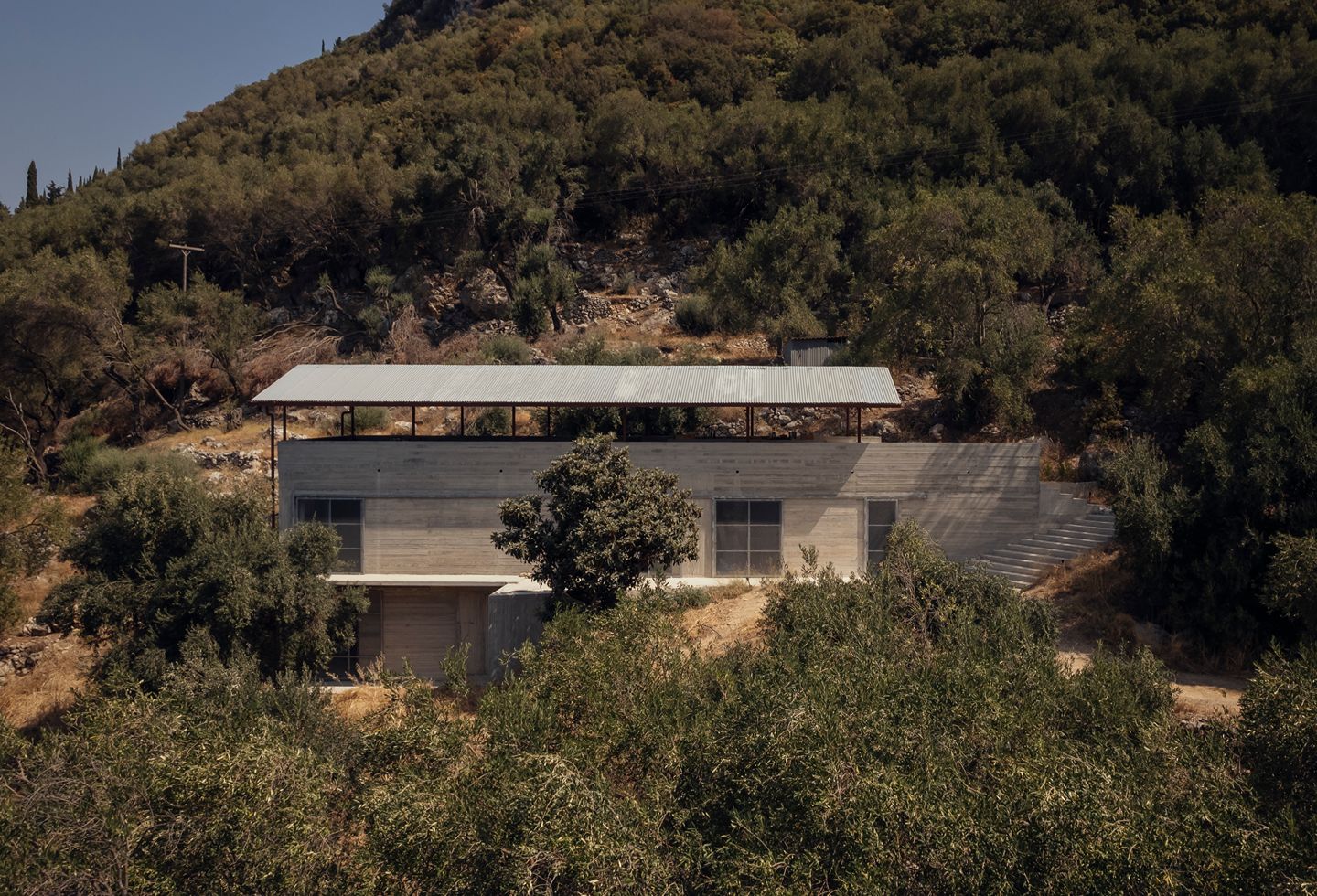
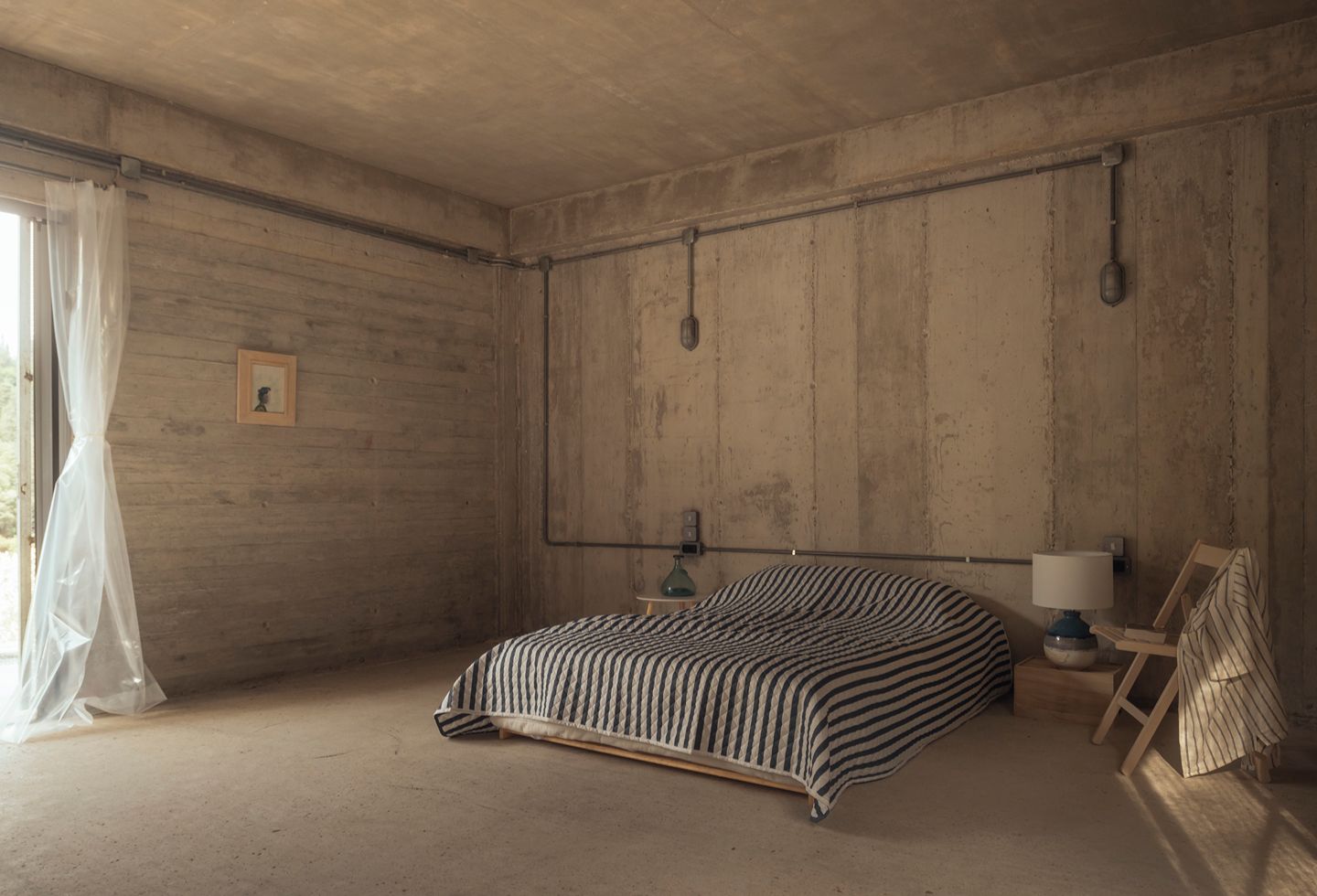
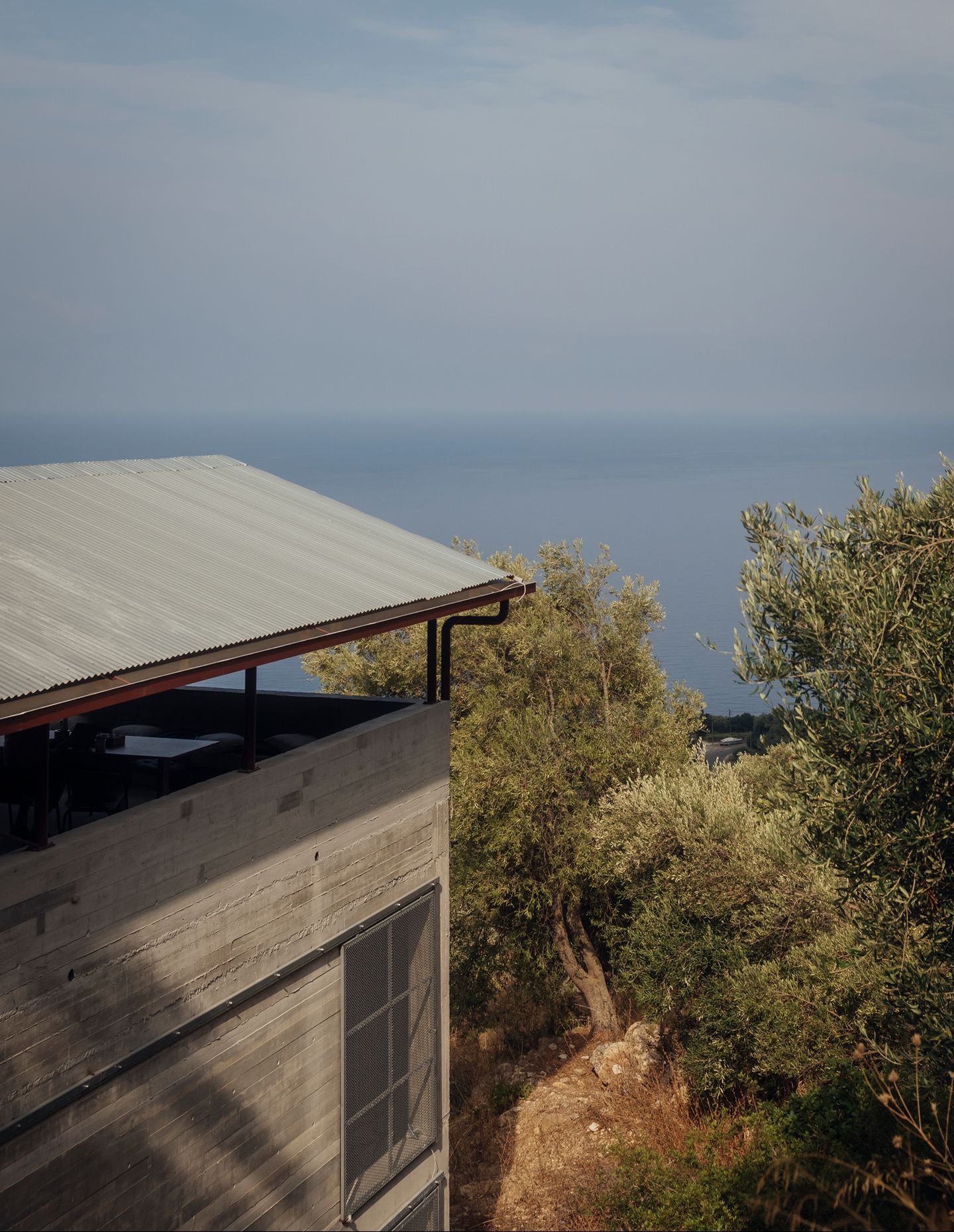
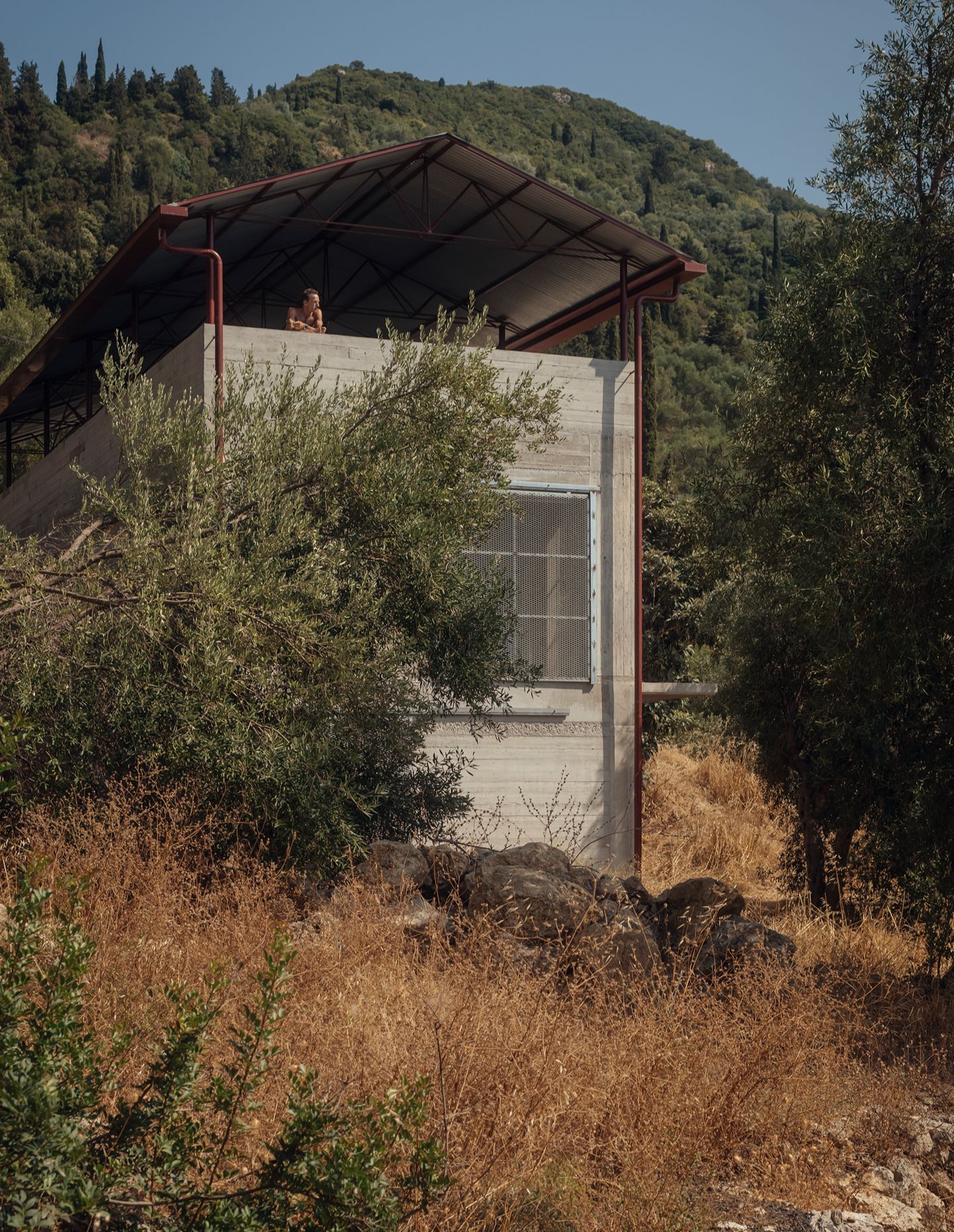
This honesty in expression transforms the ordinary into something extraordinary, making a case for an architecture that is as much about process as it is about outcome.
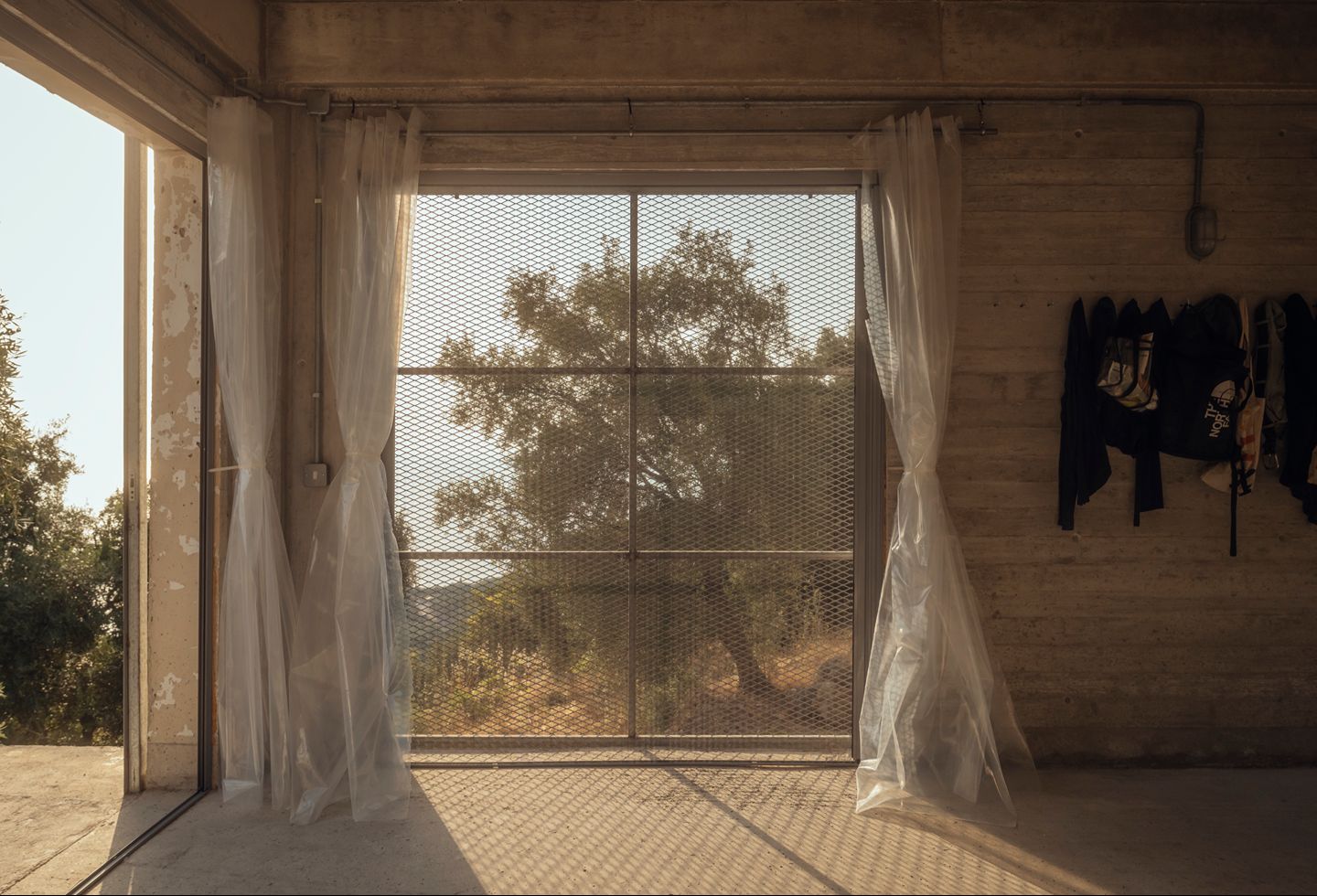
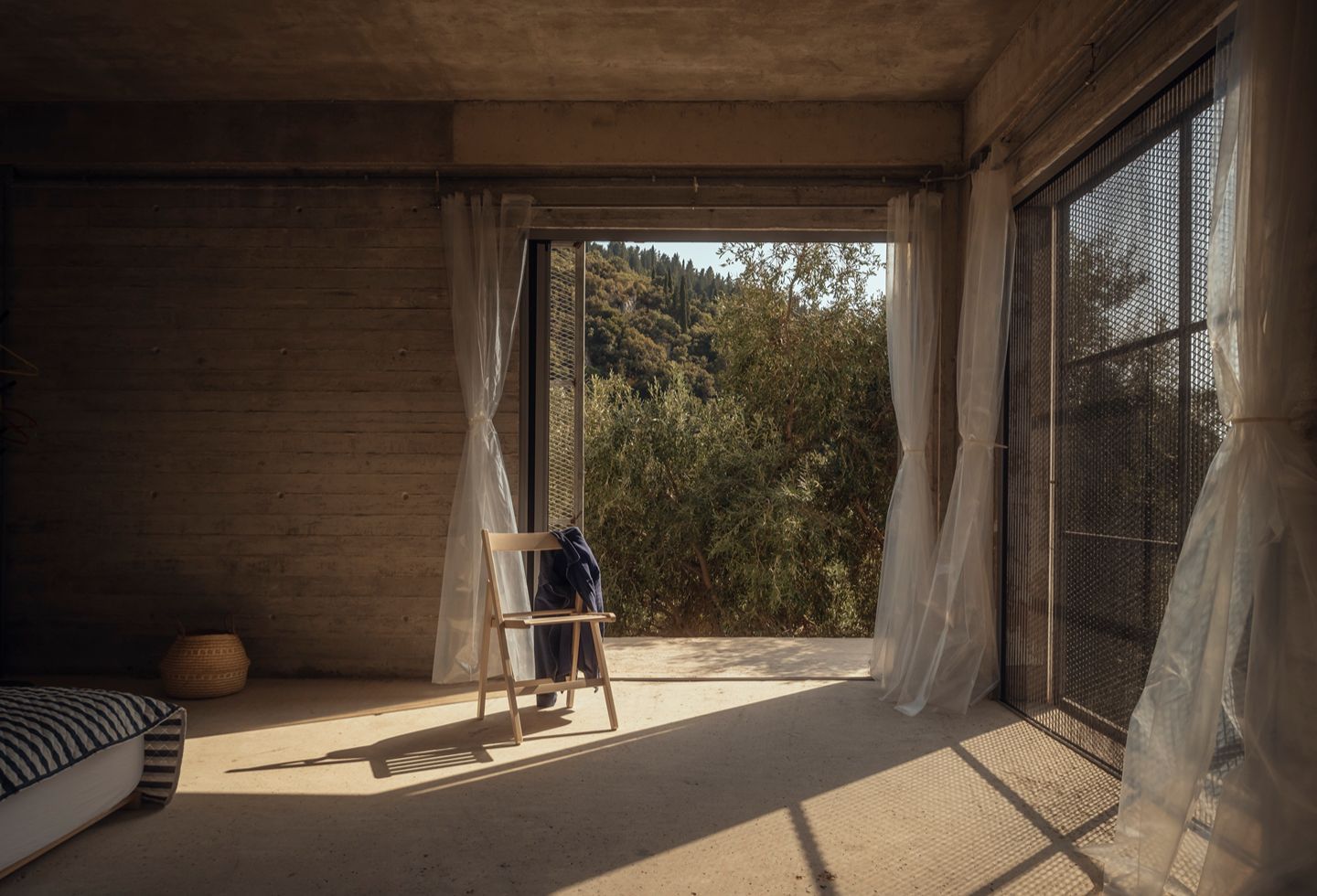
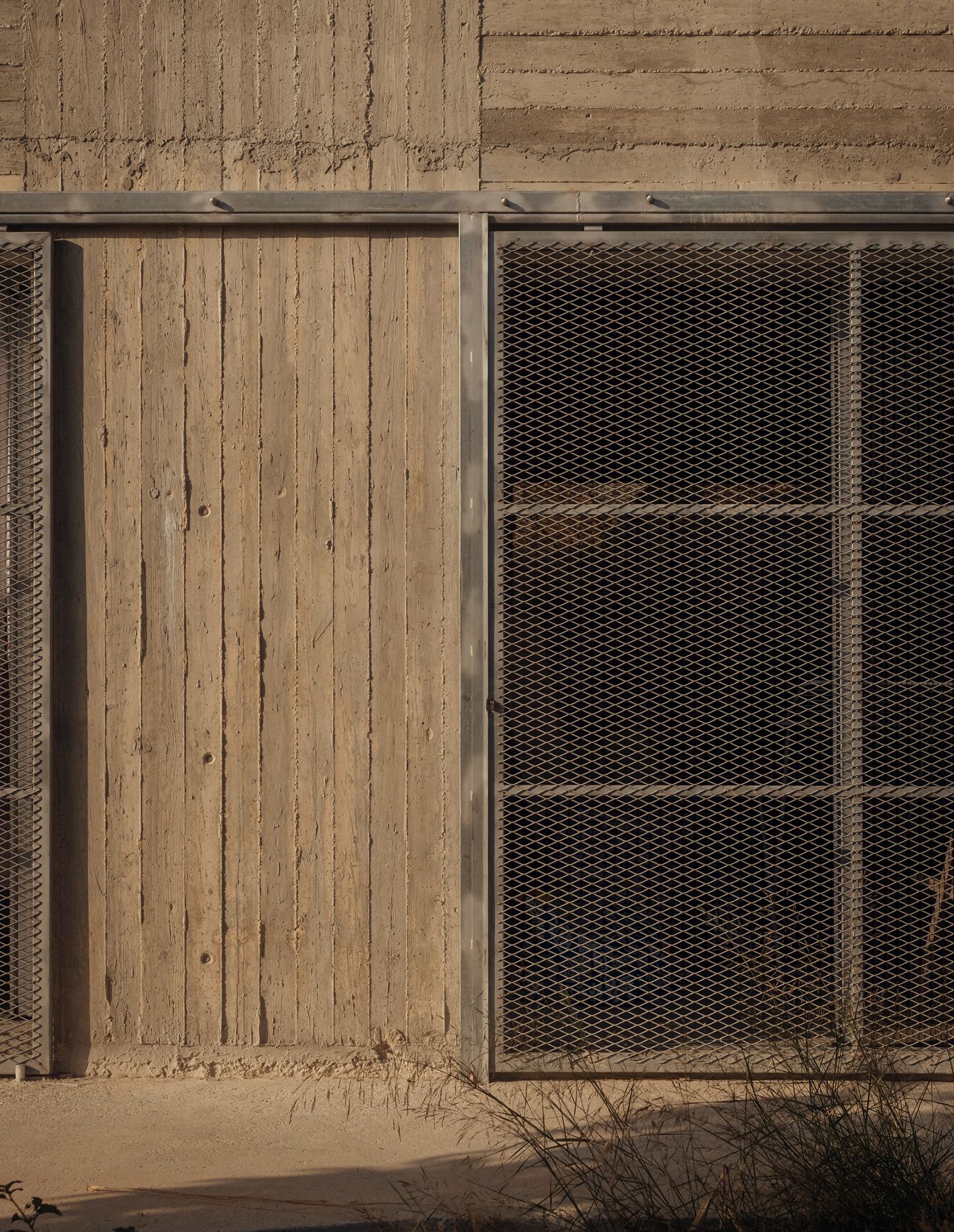
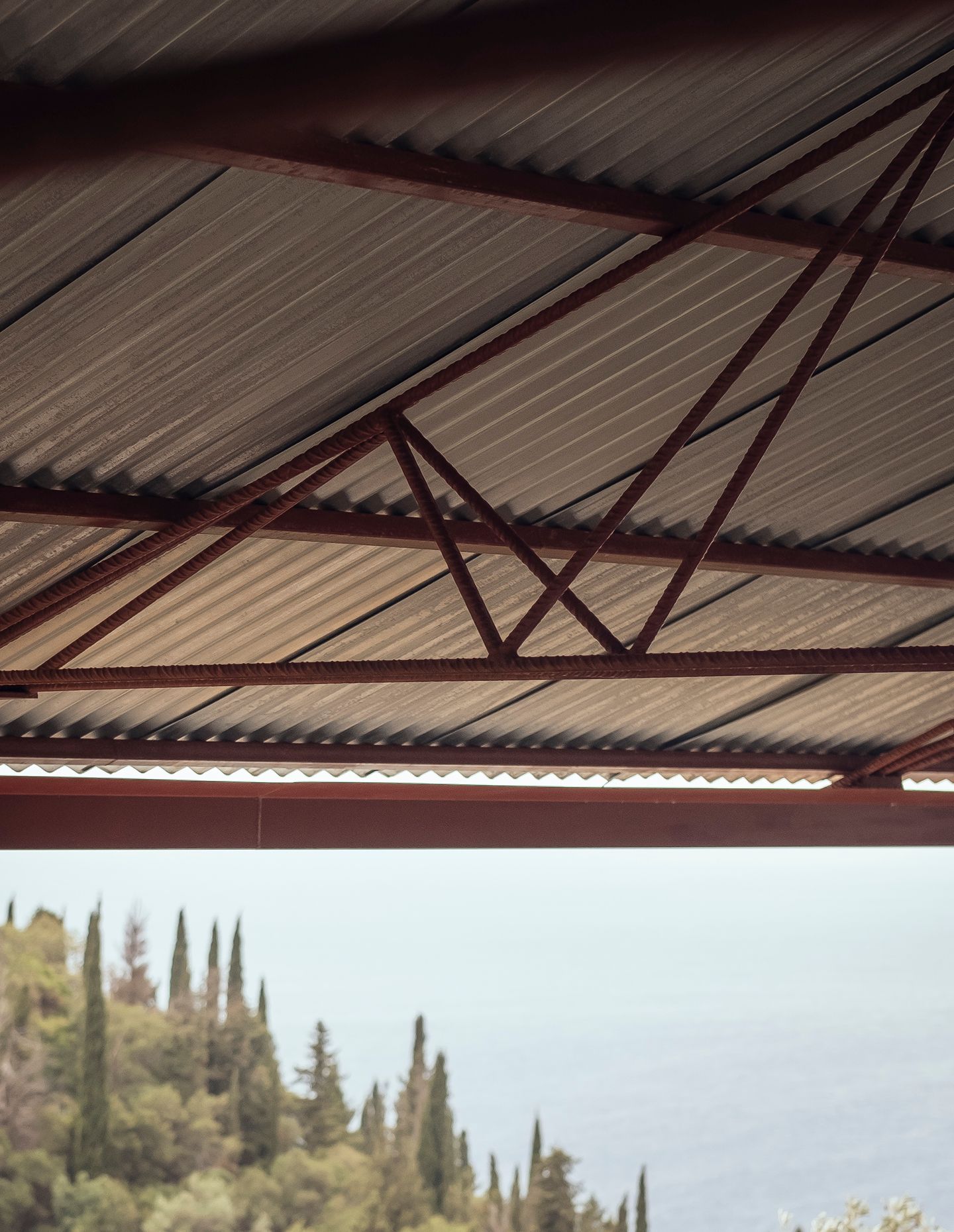
Through its flexible design, House in an Olive Grove invites a reflection on the nature of permanence and the role of memory in architecture. In doing so, Invisible Studio proposes a model of practice that resonates well beyond the borders of Greece – an architecture that is adaptable, honest and profoundly connected to its context.
Description provided by designer.
